SUMMARY
This is AI generated summarization, which may have errors. For context, always refer to the full article.
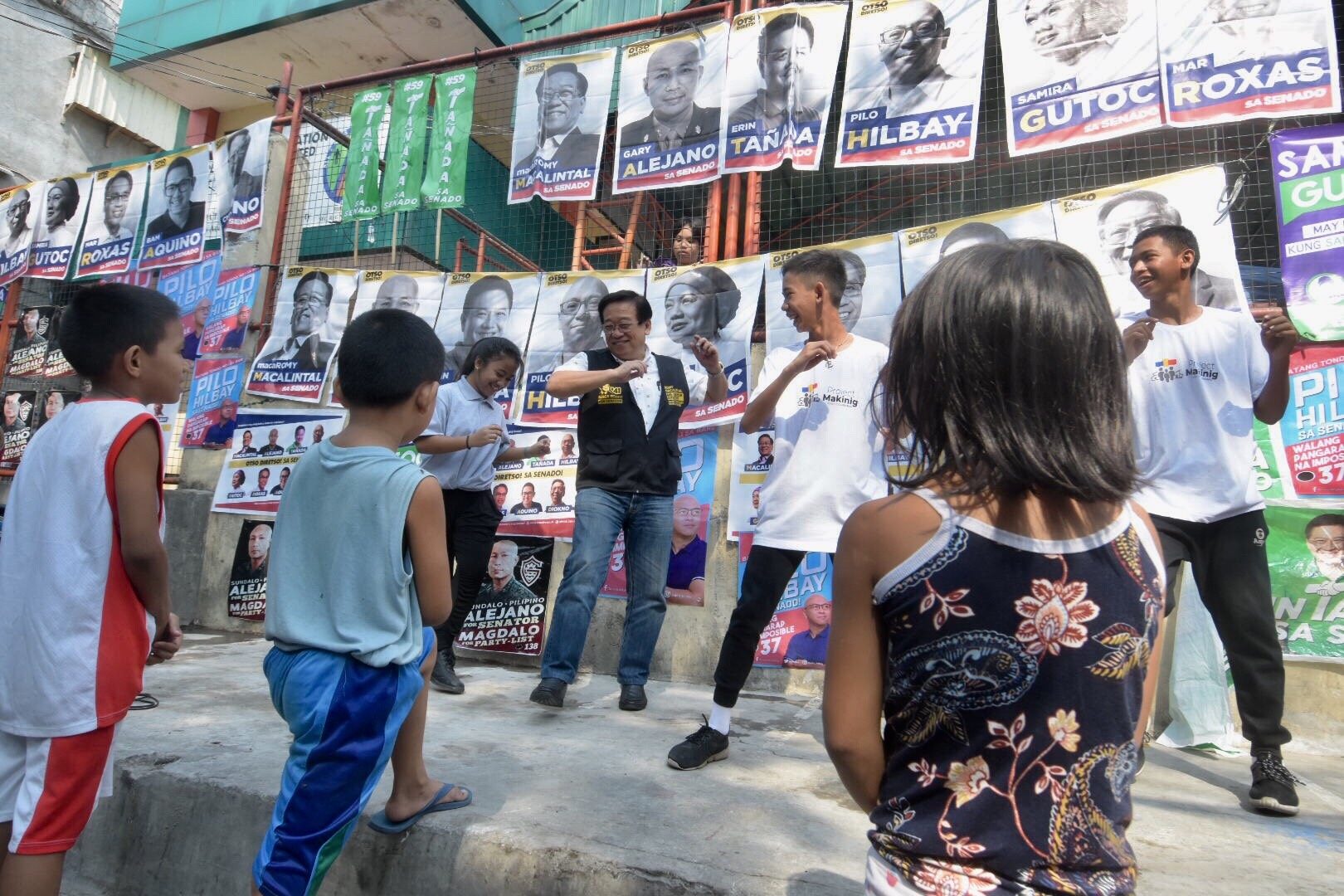
MANILA, Philippines – As campaign sorties go, Otso Diretso’s recent dialogue with residents of Barangay Addition Hills in Mandaluyong on Tuesday, March 12, was as small as they could get.
There was no stage, no tents, no complete sound system. Instead, the opposition senatorial slate’s campaign team picked a spot on the street in front of a basketball court, plastered the candidates’ posters on a wall, then lined up monobloc chairs on the sidewalk for the Otso Diretso bets to sit on. (READ: Win or lose, Otso Diretso bets to push for their advocacies)
There was a large speaker connected to a microphone used by the Otso Diretso candidates present and the representatives of those who could not make it. Their campaigin jingles were played from a campaign staff’s phone, allowing the few residents who gathered to listen to the candidates’ campaign speeches and jingles.
No local official endorsed Otso Diretso that day.
It’s a far cry from the campaign sortie of Hugpong ng Pagbabago in Mandaluyong days before, which featured a large stage and a huge crowd. The administration bets were hosted by no less than Mayor Menchie Abalos.
The rest of Otso Diretso’s rounds in other parts of the country have seen larger crowds for sure. But they still cannot match the sorties of the administration slates, which can afford to hire celebrities to perform for their audience.
Lack of money, machinery, and support from politicians have been hounding Otso Diretso since the campaign season began.
But its 8 senatorial bets – Magdalo Representative Gary Alejano, reelectionist Senator Bam Aquino, human right lawyer Chel Diokno, Marawi civic leader Samira Gutoc, ex-solicitor general Florin Hilbay, election lawyer Romy Macalintal, ex-interior chief Mar Roxas, and ex-Quezon congressman Erin Tañada – remain unfazed, as they look at their smaller campaign sorties and gatherings as a more intimate way to connect with voters.
“Rallies are costly and preach to the converted, hakot (bussed-in) crowd. We prefer to go directly to where the voters are, whether in campuses, residential communities, or public markets,” Otso Diretso campaign manager and Senator Francis Pangilinan told Rappler.
Otso Diretso’s campaign team has also opted to pursue non-traditional means to court voters. They are heavily relying on volunteers to boost awareness for the opposition candidates.
The consequence of being opposition
Perhaps the biggest obstacle being faced by Otso Diretso is having few to zero politicians who are openly endorsing them.
Only a handful of local elected officials have willingly shared the stage with the opposition senatorial bets so far, among them Naga City Mayor John Bongat and Muntinlupa City Mayor Jaime Fresnedi – both members of the once-ruling Liberal Party (LP).
Alejano said it is an expected consequence of being part of the opposition ticket critical of President Rodrigo Duterte and his policies.
“Most local officials do not want to be publicly identified with the opposition bets for fear of the backlash from [the] Duterte admin,” said the former mutineer-turned-congressman.
It is an understandable scenario, what with the Duterte government threatening to release another narco list in the middle of the campaign period. (READ: Chel Diokno to Duterte: Stop weaponizing lists)
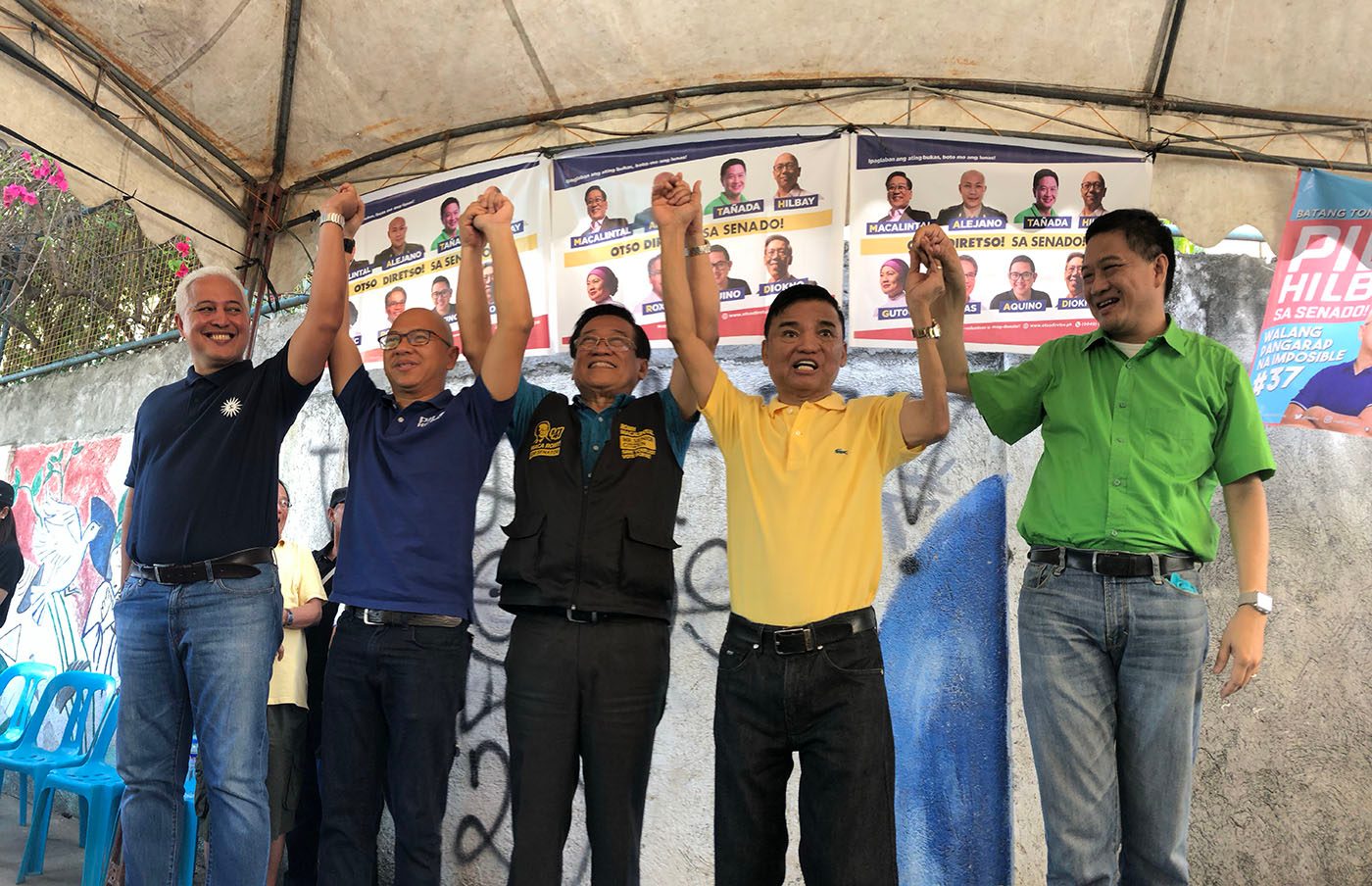
Still, Alejano and Macalintal told Rappler in separate interviews, there are incumbent politicians who “secretly” support them. They said the Otso Diretso bets meet with these politicians in private, either at the latter’s offices or their homes. These secret allies then supposedly assign someone else to help Otso Diretso organize their campaign rounds.
“’Yong mga politicians mismo ang magsasabi sa amin na, ‘Hindi puwedeng mag-open [support] kami [sa inyo], pero dadalhin ka namin.’ Mga gano’ng salita. Eh nakakabuhay ng damdamin ’yon,” said Macalintal.
(The politicians themselves tell us, “We cannot openly support you, but we will campaign for you.” They say things like that. It lifts our spirits up.)
Just how crucial really is the support of a local leader?
Tañada explained that, beyond convincing their constituents to vote for a certain slate, local politicians often make the logistical arrangements for the campaign rally to be easier.
“Ang difference kasi ’pag mayroong kang local government candidate, ang nangyayari diyan, at least maasikaso kaagad ’yong logistics ng rally. Ngayon, kapag wala kang LGU (local government unit) support, kailangan dito na magkaroon ng civil society organizations para iipon ’yong mga tao. So of course hindi gano’ng kadali ’yan,” said Tañada.
(The difference when you have a local government candidate is that, at least, the logistics of the rally will be taken care of. Now, if you don’t have LGU support, you need civil society organizations to gather people. Of course, it’s not easy to do that.)
Then there’s the lack of campaign funds. It’s no secret Otso Diretso does not have the vaunted campaign kitty of the administration-backed candidates. The fact that only Roxas and Aquino – the most veteran candidates in the lineup and the only ones ranking high in surveys – can afford to produce solo television advertisements proves this.
Otso Diretso’s campaign posters are also outnumbered by their opponents. Often, the opposition slate’s posters are put up hours – sometimes even mere minutes – before they arrive in a certain area, indicating that it’s their advance parties that put them up instead of local allies.
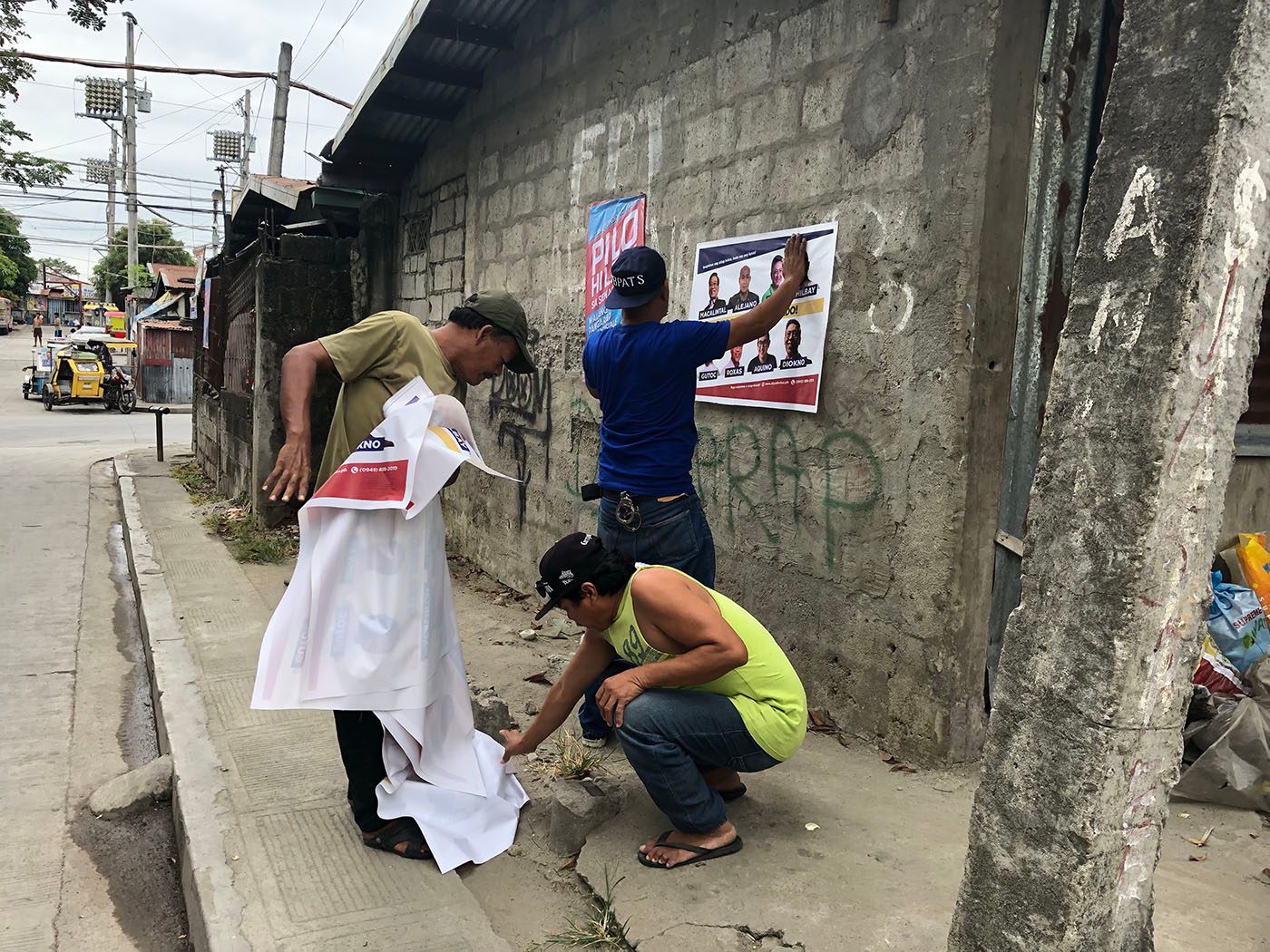
Tañada said these issues have forced the slate to adjust its campaign strategy “to where the people are located.”
“Kaya kung titignan ninyo, community-based, hindi plaza-based [’yong sorties namin], kasi ’yong mga rally ng mga local government units sa malalaking plaza or sa coliseum (As you can see, our sorties are community-based, not plaza-based, because the rallies hosted by local government units are often held in big plazas or coliseums). So, to cut cost, we are going to the communities and have townhall [meetings],” said Tañada.
A typical campaign day for Otso Diretso involves visits to public markets, then dialogues with students and sectoral representatives. The candidates first deliver their usual campaign speeches –with slight variations here and there, depending on the crowd – then the audience is given time to directly ask them questions. They also hold meet-and-greets with their campaign volunteers.
Otso Diretso then conducts its listening and persuasion campaign called Project Makinig, wherein the candidates introduce themselves to residents, listen to their everyday struggles, and ask for their inputs on how the government can address these issues.
These sorties, organized by the slate’s campaign headquarters, usually happen from Thursdays to Fridays. The candidates are not required to attend, however. So whenever they have other scheduled campaign rounds already, most of the senatorial bets send representatives instead.
For the rest of the week, the Otso Diretso candidates do their own rounds organized by their respective campaign teams. They deny claims their senatorial ticket is not united, since the Otso Diretso candidates are barely seen together these days.
Vice President Leni Robredo herself campaigns for Otso Diretso whenever she visits the provinces, always touting the candidates’ track records in their respective fields. (READ: Can Otso Diretso do a repeat of Robredo’s 2016 victory?)
The events of Robredo’s Ahon Laylayan Coalition has also become an avenue for the candidates to relay their platforms and ensure their plans respond to the people’s needs. The coalition was first convened in 2017 to allow various sectors to articulate their concerns and craft solutions with the Vice President.
Keeping the volunteers organized
At the heart of Otso Diretso’s non-traditional campaign are its volunteers, a majority of whom were recruited either online or through the first phase of Project Makinig. Through this approach LP had recruited more non-politician members and later tapping into existing civil society organizations to conduct its listening campaign in 2018. (READ: Liberal Party now ‘listens’ to the people it once ignored)
John Paulo delas Nieves, a political officer on Pangilinan’s staff, is now part of Otso Diretso’s operations team. He said his team primarily works together with the Project Makinig team to keep the volunteers organized.
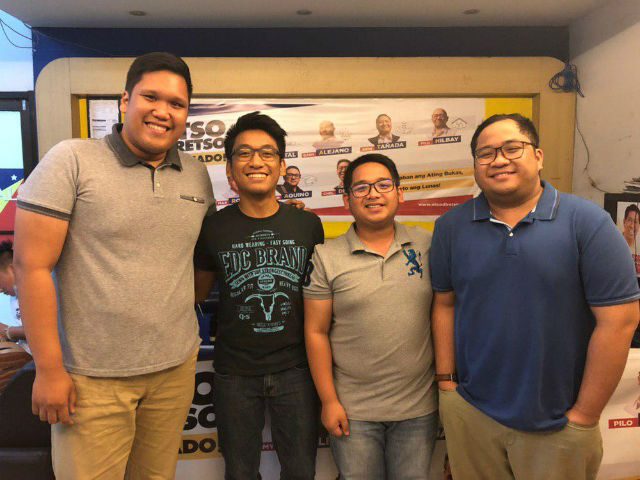
Delas Nieves said once a certain city or province has been chosen to be visited by the senatorial ticket, the operations team reaches out to their Project Makinig contacts in the said area.
“Sila ‘yong first contact namin for sortie. Ang tanong sa kanila, ‘Mayroon ba tayong volunteers na puwedeng ma-gather diyan, puwedeng makasama natin, and puwede mo kaming tulungan kung saang area puwedeng pumunta?’” said Delas Nieves.
(They are our first contacts for sorties. We ask them, “Do we have volunteers we can gather there and who can join us, and can you help us identify the places we can go to?’)
The Project Makinig team has volunteer relations officers per province, who relay instructions from the headquarters to the volunteers on the ground.
What are the volunteers – which Delas Nieves pegged to be at least 12,000 – expected to do? Like the Otso Diretso bets, they are tasked to knock on the doors of residents and campaign for the senatorial ticket. (READ: Otso Diretso volunteers channel ‘people power’ to court Ilonggo vote)
“Ang idea natin, ang campaign na ito hindi lang kandidato ‘yong nangangampanya, pero ‘yong volunteers mismo ‘yong nangangampanya para sa kanila. So sobrang different siya sa rally style ng Hugpong,” said Delas Nieves.
(Our idea for this campaign is, the candidates are not only the ones campaigning, but the volunteers must also campaign for them. So it’s very different from the rally style of Hugpong.)
Otso Diretso also has its own “call center” composed of around 20 people led by volunteer relations officer Walter Tamayo. Armed with their personal phones with loads paid for by the campaign headquarters, this group is tasked to constantly keep in touch with those who signed up as volunteers and to connect them to the area coordinators.
“So our job is to not only invite them to the actual sorties but to connect them to the coordinators. For example, we tell them who are the point persons there and how to connect with them. From there, we continue the conversation,” said Tamayo.
He shared these calls are also a means for people who are not necessarily tech-savvy – those who do not have social media accounts – to donate money for Otso Diretso’s campaign. Tamayo said these callers donate funds through domestic remittance services.
#KartonRevolution
Like the Otso Diretso candidates, funding is considered to be one of the biggest problems encountered by the volunteers. This has prompted the campaign team to open a GoGetFunding account to solicit donations online.
As of Thursday, March 14, a total of 126 backers have donated P309,890. Otso Diretso hopes donations will reach as high as P8 million before the May elections.
Volunteer relations officer Peter Olivar shared to Rappler that the volunteers themselves can feel the lack of campaign funds, as they compare the number of Otso Diretso’s tarpaulins with that of the administration candidates.
Volunteers have since used cardboard boxes, cartolinas, and even sacks to create makeshift campaign posters for Otso Diretso. They created a Facebook page called #KartonRevolution to share pictures of their handiwork.
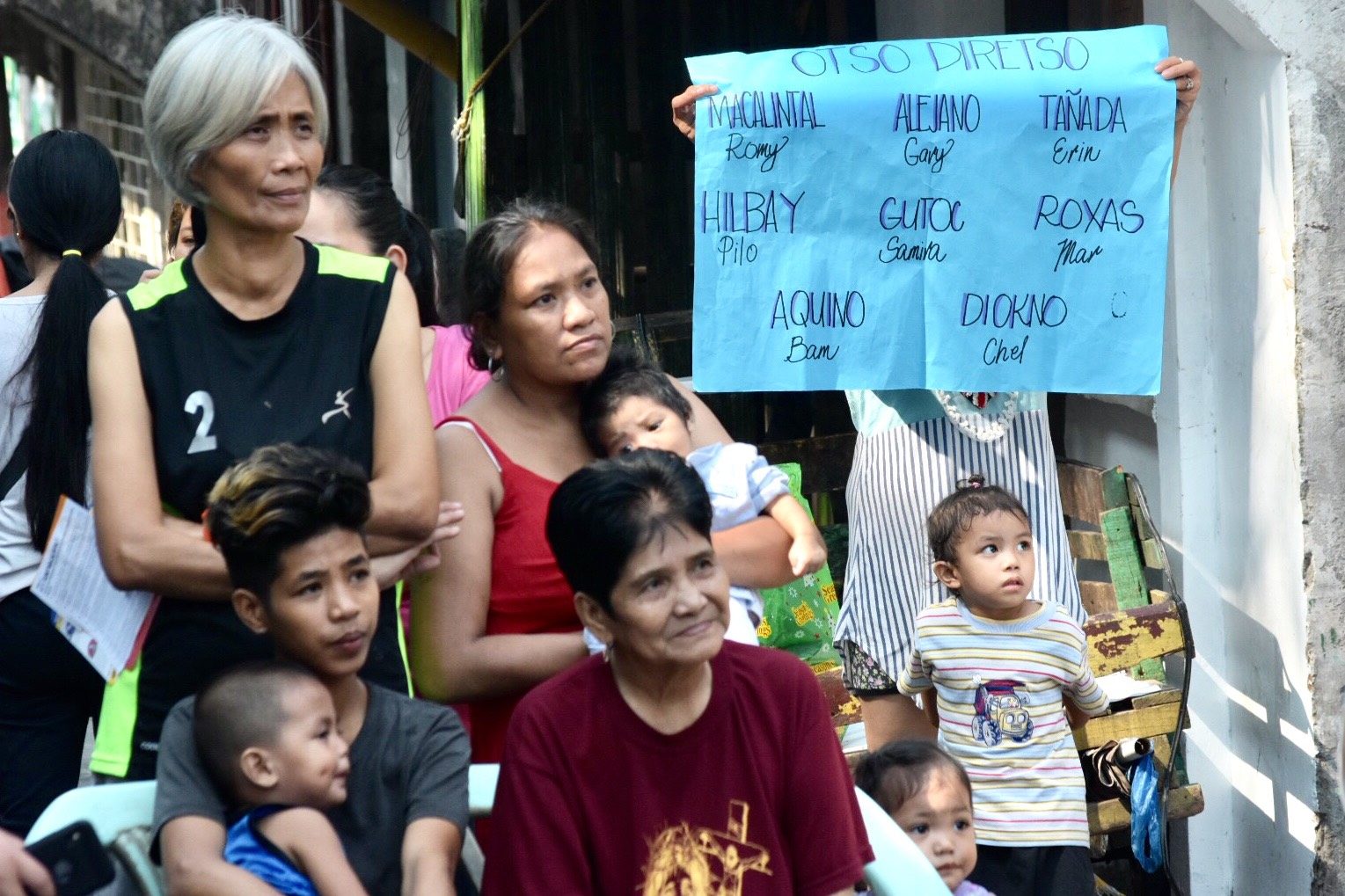
“So itong mga karton na ‘to, sinasabit nila. They’re very proud na ‘nilalagay nila sa gate nila, ‘nilalagay sa tricycle. And even kids na parang very eager mag-color just to show how they support the 8 candidates,” said Olivar.
(They put up these cartons. They’re very proud of these and post them on their gates or tricycles. And even the kids are very eager to color the posters just to show how they support the 8 candidates.)
“It’s very telling na people want to be part of this change, they want to be part of a revolution, na kahit normal kami na mamamayan ay kasama kami sa kampanya ng 8 kandidato (that even if they are just ordinary citizens, they are still part of the campaign of the 8 candidates),” he added.
A volunteer’s wish
Most of the volunteers do not get salaries. They are given only shirts, water, food, and free transportation during their campaign rounds.
But even without the monetary incentive, the likes of 36-year-old Johanna Balliad from Cebu City remain dedicated to their volunteer work.
Balliad was 3 months pregnant when Rappler met her in the campaign trail in February. She is one of the active volunteer relations officers for Otso Diretso in the Visayas. (READ: Robredo: Otso Diretso to rely on ‘unmatched dedication’ of Cebu volunteers)
“We are fighting for our future, my baby’s future. Kasi mahirap na ‘yong mga kurakot ang nasa Senado, ‘di ba? Parang walang check and balance ‘pag ang lahat nasa administrasyon. So kailangan mayroong nasa oposisyon na parang safe naman ‘yong rights nating mga Pilipino,” said Balliad.
(We are fighting for our future, my baby’s future. It’s hard if everyone in the Senate are corrupt, right? It’s like there won’t be any checks and balances if everyone will be allied with the administration. So we need those from the opposition so our rights as Filipinos will be safeguarded.)
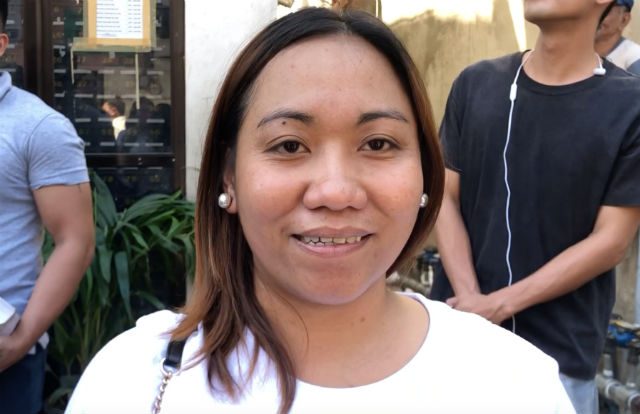
Asked what’s the hardest part about volunteering, Balliad says, “Actually wala pong mahirap if passion mo, if gusto mo ‘yong work mo, and may ipaglalaban ka (Nothing is difficult if it’s your passion, if you like what you’re doing, and if you are fighting for something).”
With all odds stacked against Otso Diretso, it’s tough to volunteer for the slate. Even more so when 6 of Otso Diretso have yet to breach into the coveted winners’ circle in pre-election surveys.
But Ron Reyes, another volunteer relations officer, puts it best: he hopes the fruit of the volunteers’ labor should go beyond the May 13 elections.
“I don’t want this to end this 2019. Everybody can agree when I say we want this continue. Project Makinig will continue to be a process in a political scene where our politicians will learn how to listen, and listen regularly to the constituents – not just every 3 years, every 6 years, but constant communication with the people,” said Reyes in a mix of English and Filipino.
“So we hope that, even if some people say our efforts are small now, we want history to judge us that, at least, we made something significant this 2019,” Reyes said. – Rappler.com
Photo of Otso Diretso campaigning in Mandaluyong City by Angie de Silva/Rappler
Add a comment
How does this make you feel?
There are no comments yet. Add your comment to start the conversation.